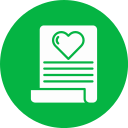Simple Mindfulness Practices for Professionals: Start Calm, Work Smart
Welcome to a focused home base dedicated to Simple Mindfulness Practices for Professionals. Explore practical, evidence-informed rituals you can use between meetings, in busy inboxes, and during high-stakes moments—without adding hours to your day.

Begin the Workday with Intention
Place both feet on the floor, relax your jaw, exhale slowly, and breathe in through the nose for four counts. Hold briefly, then exhale for six. One project manager told us this ninety-second reset stopped spiraling before a quarterly review.

Mindful Meetings That Actually Work

Arrive, Not Just Attend
Turn off notifications, feel your feet, exhale longer than you inhale, then enter the call. Suggest a ten-second quiet start. People breathe, shoulders drop, and agendas sharpen. A small arrival ritual makes every minute more valuable.

Single-Task Listening
Close unrelated tabs. While others speak, notice the urge to craft replies. Label it silently—“planning”—then return to their words. Ask one clarifying question before offering solutions. This shifts meetings from competitive to collaborative, and it shows respect.

Close with Gratitude and Next Step
End by naming one contribution you appreciated and one concrete next action with an owner and date. Gratitude boosts cohesion; clarity reduces stress. Try it today, then share how your team responded in the comments.
Focus in a Distracted Office
Keep only three windows open: the task, reference, and communication. Anything else goes to a parking tab. Every hour, do a twenty-second posture check while closing strays. Engineers report fewer errors and calmer context switches using this rule.
Batch notifications into scheduled checks at set times. During focus blocks, enable do-not-disturb and put your phone face down, out of reach. Mindfully scan messages later with one question: what genuinely requires me now?
Work twenty-five minutes, then take a mindful minute. Look away from screens, notice five things you see, four you feel, three you hear. Return with a single, clear intention. Subscribe for our free audio prompts that guide these resets.

Stress First Aid Between Tasks
Box Breathing for Spikes
Inhale four, hold four, exhale four, hold four—repeat three rounds. Breath control engages your parasympathetic system and steadies attention under pressure. Try it after difficult emails and notice how the reply tone shifts from reactive to reasoned.
Desk Body Scan
Relax your jaw, soften your eyes, drop your shoulders, widen your palms, and unclench toes. Let the breath lengthen naturally. This two-minute scan reveals hidden strain and pairs well with a quick ergonomic tweak, like raising your screen.
Label and Let Go
Silently name what you feel—“I’m noticing frustration and urgency.” Research shows labeling emotions can dial down amygdala activity. After naming, choose a small next step. Comment which label helped you recently, and what you did next.
Mindfulness for Remote and Hybrid Teams
Before unmuting, take one breath, lift your gaze to eye level, and soften your face. This tiny reset improves tone and engagement. Teams that try it report fewer misunderstandings and smoother decisions in complex, cross-time-zone projects.

Attach one practice to a daily anchor: breathe when you log in, scan your calendar before coffee, write your intention after standup. Anchoring removes decision fatigue and makes consistency almost automatic during demanding weeks.
